Research at the Agri Food and Biosciences Institute (AFBI) has shown that agroforestry can allow uninterrupted grass growth, while producing a timber crop and providing shelter and extended grazing for livestock. DAERA define agroforestry as “integrating trees with crops and/or livestock on the same plot of land”.
Growing grass and trees at the same time.
A grant for establishing and maintaining agroforestry in NI is available under the wider level of the Environmental Farming Scheme (EFS). Under the second tranche of the scheme, which opens to applicants on 20 August, a grant of £1,637/ha is available in year one (to cover establishment costs), with £65/ha paid in years two to five.
According to Dr Jim McAdam from AFBI, a 0.9ha area of agroforestry at AFBI’s Loughgall site had the same grass production over the first 12 years after establishment as a control plot of standard grassland.
Planting
The agroforestry area at Loughgall was planted in 1990 with ash trees spaced at five metres apart, which equates to 400 trees/ha. By comparison, a standard forestry plantation has trees planted at two metres spacing or 2,500 trees/ha.
Both the agroforestry plantation and the control plot of grassland are kept on a low input fertilisation plan, with compound fertilisers applied at a rate of 40kg N/ha/year.
“In the 13 year, when grass production in the agroforestry dropped below that of the control area, we thinned out the plantation to let more sunlight in. Around a quarter of the trees were removed, which produced a timber crop worth around £1,000/ha,” McAdam said.
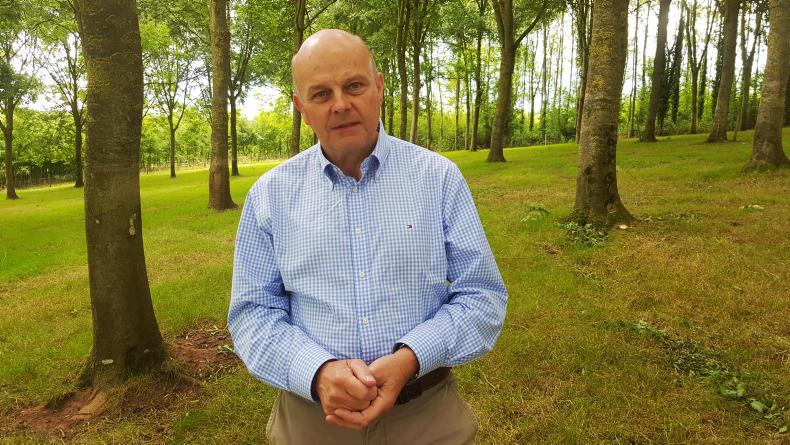
Dr Jim McAdam from AFBI.
In 2008, the trees were thinned out again and the current plantation density is 210 trees/ha. The plantation is now ready for more timber to be harvested with McAdam estimating that the agroforestry currently has a livestock carrying capacity of 30% when compared to the grassland plot. He believes that the optimum density for a mature ash plantation is around 120 trees/ha.
“If a farmer plants an area for forest, then that’s it, there’s nothing they can do with it for years until the trees are ready for harvest.
“Agroforestry is more flexible. You can remove trees and focus more on grazing or keep them in, and even plant more if you want, to focus more on timber production. You are not tied in for 30 to 50 years,” McAdam said.
Dry soils
With leaves intercepting rainfall and roots taking up significant amounts of water from the soil, the ground in the agroforestry plot is dry. McAdam said that this has allowed between 10 to 13 weeks of extra grazing per year for sheep, compared to the grassland plot. This is mostly in the late autumn and early spring, meaning that as the trees have grown, the winter housing requirement has reduced. There is also significant shelter under the trees which sheep favour during wet and windy weather, as well as during sunny conditions. The trees at the Loughgall site are at the stage of maturity where cattle could also graze the agroforestry without causing damage to trees.
McAdam said that analysis of the leaves and wood from trees in the agroforestry plot shows that nitrogen levels are the same as ash trees in areas of forest at Loughgall. He said that this indicates that fertiliser applied to agroforestry is taken up by the grass and not by the trees.
Like many areas of NI, ash dieback has been an issue in some areas of forest at Loughgall, but it has not appeared in the agroforestry. Dieback is spread by a fungus among fallen leaves on the forest floor but sheep generally eat leaves as they fall in agroforestry.
“Although ash is not approved for new agroforestry sites, there is an argument that grazing sheep through ash trees has slowed the spread of dieback in existing plantations,” McAdam said.
The management of trees in the initial years after planting is central to the successful establishment of agroforestry, according to AFBI researcher Dr Jim McAdam.
He said burning grass in a one metre wide circle around trees for the first few years reduces competition for the young trees and can double growth rates. Livestock management is also important with McAdam recommending grazing agroforestry as part of a rotational grazing system.
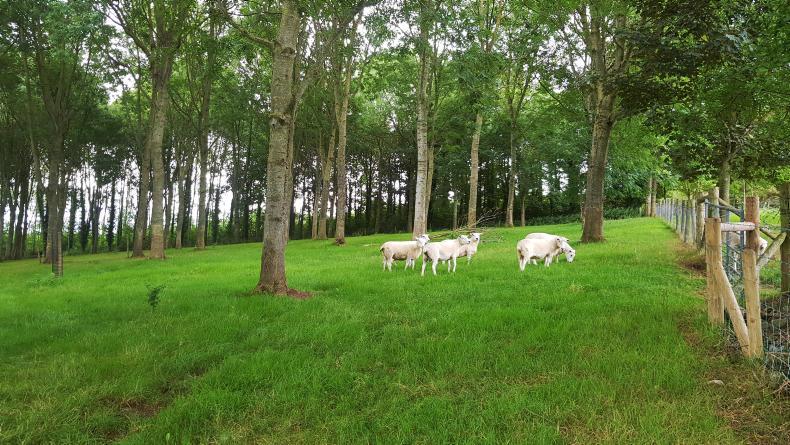
Sheep graze the agroforestry at AFBI Loughgall as part of a rotational grazing system.
“We initially had set stocking with six or seven ewes and their lambs in the agroforestry, but we found that it is better to put 20 ewes and lambs in to graze off the grass and then move them out,” he said.
As trees become more established, grazing in agroforestry can take place over longer periods.
The EFS specification for agroforestry requires trees to be planted at five metre spacings as AFBI research has shown that this is the optimum density for establishing agroforestry. As EFS is an agri-environment scheme, areas established as agroforestry remain eligible for the Basic Payment Scheme. McAdam said that agroforestry can have a useful role in an area of a farm where ground is wetter or more marginal.
However, he said that it is important that the species of tree planted suits the soil type. On marginal land, McAdam recommended alder, birch or coniferous trees with the likes of oak and wild cherry more suited to better quality land.
“Sycamore can grow well on dry, hard soils. Farmers should plant a mixture of species to spread the risk from pests and disease,” he said. Agroforestry can also work well as part of an orchard, however, under EFS, fruit trees must make up less than 50% of the species in a plantation.
In the first tranche of EFS, 24 farmers across NI applied to plant 32.5ha of agroforestry. DAERA’s initial target is to have 52ha of agroforestry established across the first two tranches of the scheme. However, there should be funds to plant more if there is farmer demand.
McAdam points out that carbon sequestration is the main environmental benefit of agroforestry. The plantation at AFBI Loughgall has 80 tonnes of carbon/ha stored in tree biomass.
AFBI researchers have calculated that carbon is accumulating in tree biomass at a rate of 3t/ha/year as the trees grow.
Studies have also shown that there is the same amount of carbon in the soils of the agroforestry plot as the grassland control plot.
“The difference we found is that there was more carbon bound to tiny particles in the soil in the agroforestry.
“This means it is bound up much tighter in the soil and is not as easily lost to the atmosphere,” McAdam said.
Agroforestry benefits biodiversity and can have a role on farms in stopping nutrient run-off into waterways where trees are planted to act as riparian zones. McAdam also pointed out that the extended grazing season under agroforestry reduces the length of time that livestock are housed, which reduces ammonia emissions.
When comparing the agroforestry at Loughgall to areas of forest that were planted at two metre spacings, McAdam said that there is little difference between the two in terms of tree biomass per hectare.
The agroforestry trees have much wider branches and are thicker, whereas ash trees in the forest are thinner, with fewer branches.
Research at the Agri Food and Biosciences Institute (AFBI) has shown that agroforestry can allow uninterrupted grass growth, while producing a timber crop and providing shelter and extended grazing for livestock. DAERA define agroforestry as “integrating trees with crops and/or livestock on the same plot of land”.
Growing grass and trees at the same time.
A grant for establishing and maintaining agroforestry in NI is available under the wider level of the Environmental Farming Scheme (EFS). Under the second tranche of the scheme, which opens to applicants on 20 August, a grant of £1,637/ha is available in year one (to cover establishment costs), with £65/ha paid in years two to five.
According to Dr Jim McAdam from AFBI, a 0.9ha area of agroforestry at AFBI’s Loughgall site had the same grass production over the first 12 years after establishment as a control plot of standard grassland.
Planting
The agroforestry area at Loughgall was planted in 1990 with ash trees spaced at five metres apart, which equates to 400 trees/ha. By comparison, a standard forestry plantation has trees planted at two metres spacing or 2,500 trees/ha.
Both the agroforestry plantation and the control plot of grassland are kept on a low input fertilisation plan, with compound fertilisers applied at a rate of 40kg N/ha/year.
“In the 13 year, when grass production in the agroforestry dropped below that of the control area, we thinned out the plantation to let more sunlight in. Around a quarter of the trees were removed, which produced a timber crop worth around £1,000/ha,” McAdam said.

Dr Jim McAdam from AFBI.
In 2008, the trees were thinned out again and the current plantation density is 210 trees/ha. The plantation is now ready for more timber to be harvested with McAdam estimating that the agroforestry currently has a livestock carrying capacity of 30% when compared to the grassland plot. He believes that the optimum density for a mature ash plantation is around 120 trees/ha.
“If a farmer plants an area for forest, then that’s it, there’s nothing they can do with it for years until the trees are ready for harvest.
“Agroforestry is more flexible. You can remove trees and focus more on grazing or keep them in, and even plant more if you want, to focus more on timber production. You are not tied in for 30 to 50 years,” McAdam said.
Dry soils
With leaves intercepting rainfall and roots taking up significant amounts of water from the soil, the ground in the agroforestry plot is dry. McAdam said that this has allowed between 10 to 13 weeks of extra grazing per year for sheep, compared to the grassland plot. This is mostly in the late autumn and early spring, meaning that as the trees have grown, the winter housing requirement has reduced. There is also significant shelter under the trees which sheep favour during wet and windy weather, as well as during sunny conditions. The trees at the Loughgall site are at the stage of maturity where cattle could also graze the agroforestry without causing damage to trees.
McAdam said that analysis of the leaves and wood from trees in the agroforestry plot shows that nitrogen levels are the same as ash trees in areas of forest at Loughgall. He said that this indicates that fertiliser applied to agroforestry is taken up by the grass and not by the trees.
Like many areas of NI, ash dieback has been an issue in some areas of forest at Loughgall, but it has not appeared in the agroforestry. Dieback is spread by a fungus among fallen leaves on the forest floor but sheep generally eat leaves as they fall in agroforestry.
“Although ash is not approved for new agroforestry sites, there is an argument that grazing sheep through ash trees has slowed the spread of dieback in existing plantations,” McAdam said.
The management of trees in the initial years after planting is central to the successful establishment of agroforestry, according to AFBI researcher Dr Jim McAdam.
He said burning grass in a one metre wide circle around trees for the first few years reduces competition for the young trees and can double growth rates. Livestock management is also important with McAdam recommending grazing agroforestry as part of a rotational grazing system.

Sheep graze the agroforestry at AFBI Loughgall as part of a rotational grazing system.
“We initially had set stocking with six or seven ewes and their lambs in the agroforestry, but we found that it is better to put 20 ewes and lambs in to graze off the grass and then move them out,” he said.
As trees become more established, grazing in agroforestry can take place over longer periods.
The EFS specification for agroforestry requires trees to be planted at five metre spacings as AFBI research has shown that this is the optimum density for establishing agroforestry. As EFS is an agri-environment scheme, areas established as agroforestry remain eligible for the Basic Payment Scheme. McAdam said that agroforestry can have a useful role in an area of a farm where ground is wetter or more marginal.
However, he said that it is important that the species of tree planted suits the soil type. On marginal land, McAdam recommended alder, birch or coniferous trees with the likes of oak and wild cherry more suited to better quality land.
“Sycamore can grow well on dry, hard soils. Farmers should plant a mixture of species to spread the risk from pests and disease,” he said. Agroforestry can also work well as part of an orchard, however, under EFS, fruit trees must make up less than 50% of the species in a plantation.
In the first tranche of EFS, 24 farmers across NI applied to plant 32.5ha of agroforestry. DAERA’s initial target is to have 52ha of agroforestry established across the first two tranches of the scheme. However, there should be funds to plant more if there is farmer demand.
McAdam points out that carbon sequestration is the main environmental benefit of agroforestry. The plantation at AFBI Loughgall has 80 tonnes of carbon/ha stored in tree biomass.
AFBI researchers have calculated that carbon is accumulating in tree biomass at a rate of 3t/ha/year as the trees grow.
Studies have also shown that there is the same amount of carbon in the soils of the agroforestry plot as the grassland control plot.
“The difference we found is that there was more carbon bound to tiny particles in the soil in the agroforestry.
“This means it is bound up much tighter in the soil and is not as easily lost to the atmosphere,” McAdam said.
Agroforestry benefits biodiversity and can have a role on farms in stopping nutrient run-off into waterways where trees are planted to act as riparian zones. McAdam also pointed out that the extended grazing season under agroforestry reduces the length of time that livestock are housed, which reduces ammonia emissions.
When comparing the agroforestry at Loughgall to areas of forest that were planted at two metre spacings, McAdam said that there is little difference between the two in terms of tree biomass per hectare.
The agroforestry trees have much wider branches and are thicker, whereas ash trees in the forest are thinner, with fewer branches.






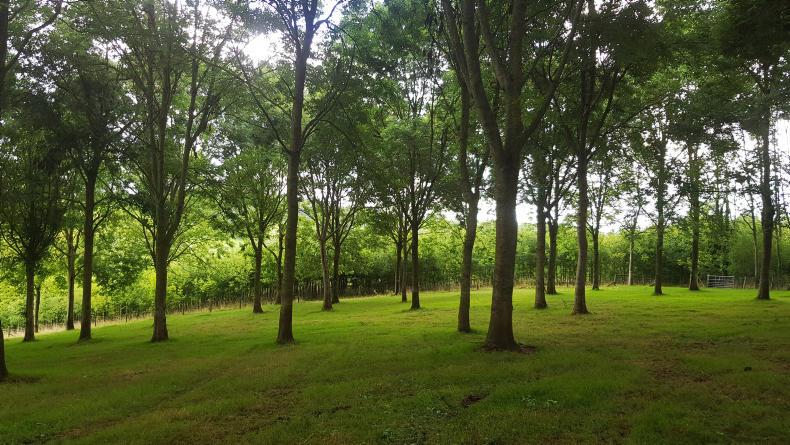
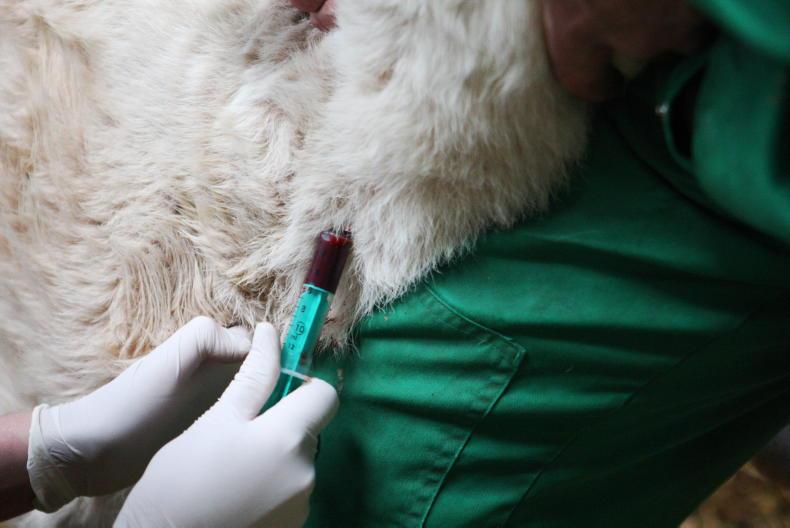
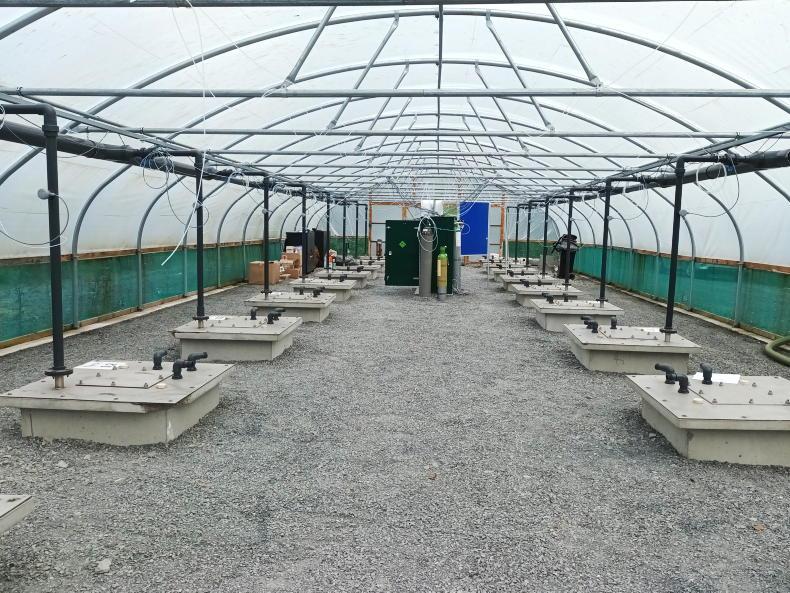
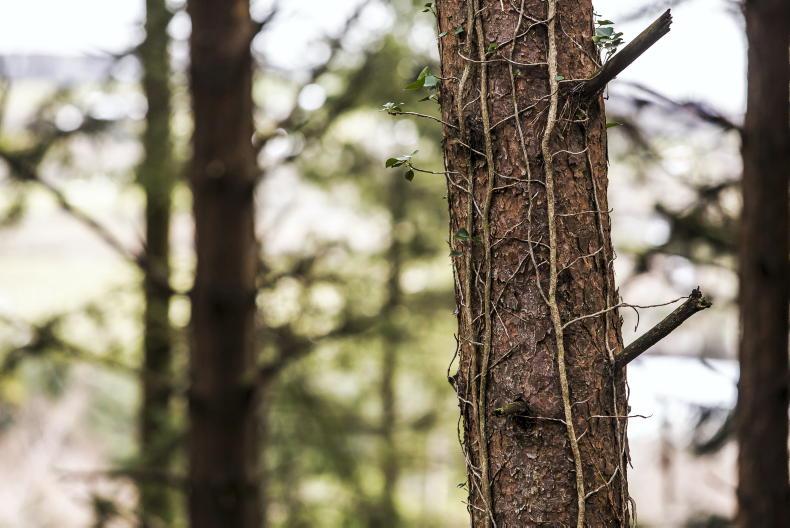
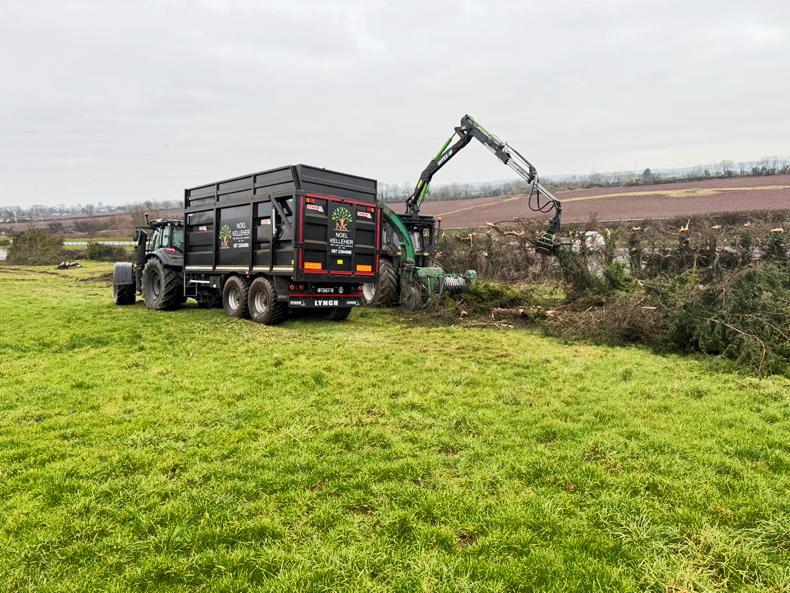
SHARING OPTIONS